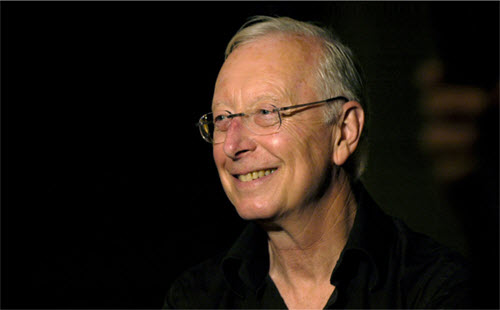 United States Leclair, François Couperin: Juilliard415, William Christie (musical direction), Benoît Hartoin (musical preparation), Vélez Blanco Patio, Metropolitan Museum, New York, 11.4.2013 (SSM)
United States Leclair, François Couperin: Juilliard415, William Christie (musical direction), Benoît Hartoin (musical preparation), Vélez Blanco Patio, Metropolitan Museum, New York, 11.4.2013 (SSM)
Presenting Organization (Music Before 1800)

Leclair: Ouverture in G major, Op.13, No. 1 (from Overtures et sonates en trio, Op.13)
François Couperin: La Sultane (from MS 129.949, Lyons, Bibliothèque Municipale)
Concert instrumental sous le titre d’Apothéose du Lulli
Marc-Antoine Charpentier: Juilliard415, William Christie (conductor/director), Corpus Christie Church, New York, 13.4.2014 (SSM)
Sonate à 8
Actéon: Pastorale en musique
Actéon, Kyle Stegall
Aréthuze/Diane, Raquel González
Junon, Virginie Verrez
Daphné, Onadek Winan
Hyale, Laetitia Grimaldi
Soprano coro, Onadek Winan, Raquel González
Alto coro, Laetitia Grimaldi, Virginie Verrez
Tenor, Nathan Haller
Baritone, Elliott Carlton Hines
The Juilliard415 concert in the Metropolitan Museum’s Renaissance Vélez Bianco Patio opened with an ouverture by Jean Marie Leclair. This “ouverture” is not the overture as we now know it but rather a form of suite which ̶ to make things more confusing ̶ has as its first movement an ouverture or, more correctly, an ouverture à la française. Created by Lully, it has a rhythmic, stately pacing with double dotting and strongly accented chords. It then goes into a quick fugue, usually on a short theme, that creates a kinetic contrast to the slow repeat that follows. The musicians understood what was needed and played this and the other two movements with charm and grace: adjectives that epitomize Leclair’s music.
Francois Couperin’s La Sultane was probably his only work for a quartet, adding a viol da gamba to the group of three who usually made up his musical ensemble. The viol adds a darker and deeper color to the mix and gives more body to the slow movements. Even the titles of the tempos have a euphonious sound: gravement, gayment, tendrement, légèrement. This music was played with flourish and grandeur.
Couperin’s Concert instrumental sous le titre d’Apothéose du Lulli is one of two Apothéoses that he wrote; the other was for Corelli. After Lully’s death, there was an effort made to open France up to the musical styles of other countries, and Couperin’s instrumental sets Les Nations and Les Goûts Réunis as well as the two Apothéoses are representative of the attempt at musical accord. Even in this piece for Lully he endeavored to reconcile the two composers which never would have happened.
What is unusual about this work is the text that accompanies the music. The composer asked that the appropriate lines be read before each of the first nine sections. It really is necessary because this music was meant to be programmatic, music that describes or tells a story. Here there would be no way to determine what he meant to describe from the music alone (as opposed to music that imitates its subject, such as birds, storms, etc.). How would one know for example that the très vite of the third movement is meant to be the flight of Mercury to the Elysian Fields? William Christie was the reader, chiming in between movements with a description of the music that would follow: each miniature played with grace and elan.
*****
From William Christie’s very first performances and recordings as conductor of his newly-formed Les Arts Florissants, he has made the revival of Charpentier’s music his cause. Even the name he chose for his orchestra, Les Arts Florissants, was the title of a Charpentier chamber opera. Rebuilding Charpentier’s reputation has been a long struggle for Christie but a successful one, and many early music enthusiasts are now cognizant of the depth and complexity of this composer.
Charpentier himself had a recognition problem during a good part of his life. When Louis XIV made Lully superintendent of music, composers were forbidden to stage musical events without his approval. Even after Lully’s death, his followers (who during Rameau’s time would be called Lullistes) were still committed to performing only music by Lully and his disciples. Much of Charpentier’s music, including Actéon, was considered inappropriate, immoral and, the worse damnation of all, “in the Italian style.”
Since 1989 Christie has been coming to New York with Les Arts Florissants to present major but little-known works from the Baroque period. His first BAM productions had a tremendous impact on the revitalization of Baroque opera. Here was this obscure music of tremendous depth and complexity, complemented by the use of original instruments and stylized singing and dancing. Although Christie revived many works by major Baroque composers, it is Charpentier to whom he always returns.
Although Actéon is labeled a Pastorale with its outdoor settings and hunting scenes, its center is really a tragedy. The high point of the opera occurs when Actéon is changed into a stag and tragedy arrives as he is ironically torn apart by the very hounds that had been searching for him in his human form.
This concert version of Charpentier’s chamber opera was enlivened by the expressiveness of the soloists. Kyle Stegall’s Actéon was intense and convincing, and he showed another, more dramatic voice than the one I admired in his role as the Evangelist in Bach’s St. John Passion. VirginieVerrez dazzled in the role of Junon. Raquel Gonzáles as Aréthuze/Diane had a strong voice, but her performance did not change my earlier opinion that her voice is too operatic for music from the Baroque period.
It is always a special event when Christie comes back to New York. We look forward to his return and his next musical discoveries.
Stan Metzger